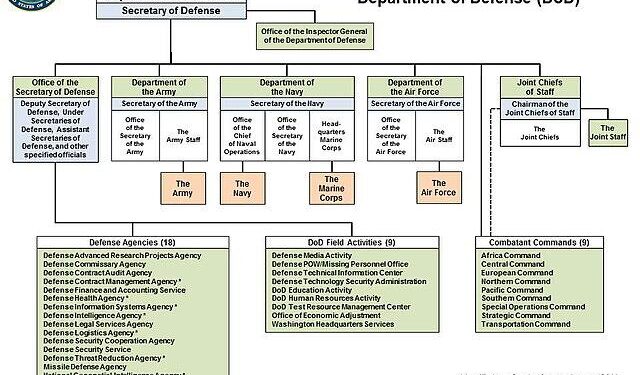The U.S. Department of Defense is facing growing concerns as proposed budget cuts to scientific research threaten to undermine the very foundation of military innovation. Experts warn that slashing funding for basic science equates to “eating its seed corn,” jeopardizing the development of next-generation technologies crucial for national security. As Defense News reports, this short-term cost-saving approach could hamper the Pentagon’s ability to maintain technological superiority in an increasingly complex global threat environment.
Impact of Science Budget Cuts on Long-Term Military Innovation
Reducing investments in scientific research within the Defense Department poses a critical threat to the future of military technology. Innovation thrives on sustained funding that supports experimental research, prototype development, and the cultivation of top-tier scientific talent. When budgets shrink, essential programs focused on emerging technologies such as artificial intelligence, quantum computing, and advanced materials risk being sidelined, delaying breakthroughs that could define the next generation of defense capabilities.
Key consequences of science budget cuts include:
- Loss of competitive edge against peer adversaries prioritizing military R&D
- Decreased collaboration with academic institutions and private sector innovators
- Reduced capacity to attract and retain leading scientists and engineers
- Increased reliance on legacy systems that may become obsolete
| Fiscal Year | Science R&D Budget (Billion $) | Key Program Impacted |
|---|---|---|
| 2021 | 12.4 | Next-Gen Stealth Tech |
| 2022 | 11.1 | AI-Driven Recon Systems |
| 2023 | 9.7 | Hypersonic Materials Research |
| 2024 (Projected) | 8.5 | Quantum Sensor Development |
Examining the Consequences for Defense Technology Development
Reducing investment in scientific research within the Defense Department is not a mere budgetary adjustment-it represents a strategic risk that can stall innovation pipelines critical to maintaining technological superiority. Historically, breakthroughs in defense have stemmed from robust, well-funded science programs that served as incubators for cutting-edge capabilities. The erosion of these funds undermines the development of next-generation technologies such as artificial intelligence-driven systems, hypersonic weapons, and advanced cyber defenses, leaving the military vulnerable to adversaries who are rapidly advancing their own capabilities.
Key repercussions likely to unfold include:
- Slower technology maturation: Reduced research budgets delay prototype development and testing phases.
- Loss of talent: Scientists and engineers may migrate to private sectors or international competitors offering more stable support.
- Weakened industrial base: Smaller contracts and unpredictability deter companies from investing in specialized defense technologies.
| Impact Area | Short-Term Effect | Long-Term Risk |
|---|---|---|
| R&D Funding | Project delays | Technological obsolescence |
| Human Capital | Departures from defense sector | Brain drain and talent shortage |
| Industrial Base | Reduced contract sizes | Loss of manufacturing capabilities |
Strategic Recommendations to Restore and Foster Defense Research Funding
To reverse the troubling trend of declining defense research funding, it is essential that policymakers take bold, targeted steps to secure and expand investment in innovation. Prioritizing long-term strategic allocation rather than short-term budget fixes will empower the Defense Department to maintain technological superiority. This includes reinforcing partnerships with leading universities, fostering public-private collaborations, and incentivizing breakthrough advancements in emerging fields such as artificial intelligence, quantum computing, and hypersonics.
Moreover, increased transparency and accountability within defense funding processes can ensure resources are directed toward programs with the highest impact potential. A focused approach entails:
- Establishing dedicated funds earmarked for early-stage research and high-risk, high-reward projects
- Implementing clear metrics to assess innovation outcomes and adjust funding dynamically
- Encouraging cross-agency coordination to avoid duplication and maximize resource efficiency
| Recommendation | Expected Impact | Time Horizon |
|---|---|---|
| Dedicated Early-Stage Research Fund | Boost innovation pipeline | Short to Mid-Term |
| Funding Accountability Metrics | Maximize ROI | Mid-Term |
| Cross-Agency Collaboration | Optimize resource use | Immediate to Long-Term |
In Conclusion
As the Defense Department grapples with tightening budgets, the consequences of slashing investments in scientific research are becoming increasingly clear. By undermining the very foundation of innovation, these cuts risk eroding the United States’ long-term military advantage and technological leadership. Without sustained commitment to science and development today, the defense industry may find itself ill-equipped to meet the challenges of tomorrow. Moving forward, policymakers face a critical choice: to preserve the nation’s strategic edge by nurturing the seeds of innovation or to sacrifice future security for short-term savings.










